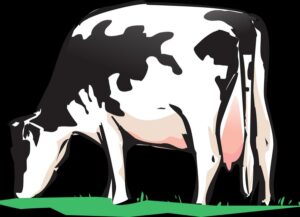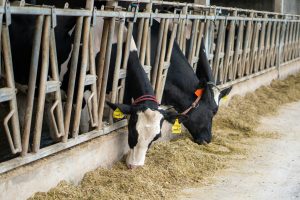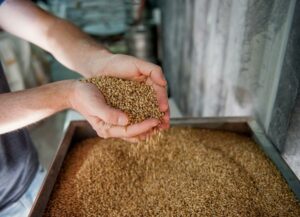Álvaro García
Making sure profitable cows continue to be profitable beyond their second lactation has a positive economic impact on the net returns of a dairy farm. The rationale behind this statement is that rearing, fixed, and variable costs can be spread over three or more lactations. Longevity has been defined as the ability for a cow to delay involuntary culling or to survive to 48 months of age.
Productive life could thus be defined as the number of lactations a cow completes or is expected to complete (death is usually unexpected!), prior to culling. Among the most profitable cows in a dairy are those that stay longer in the herd. This is the concept behind productive life rather than production per lactation.
An “average cow’ that stays 5 lactation cycles and produces 9,000 kg of milk per lactation, is more profitable than a “superior cow” producing 13,000 kg but staying only 3 lactations. The economic advantage of retaining a profitable cow will obviously be influenced by the feed/milk price ratio during her productive life.
Increased longevity will have a positive economic impact when feed to milk price ratio is low. If she maintains a reasonable milk yield, it also makes more economic sense not to cull a cow when beef prices are low. Increased longevity will also allow the farmer to focus on voluntary culling for low productivity and to reduce the number of replacements needed every year.
Whenever possible it is very important to identify early indicator traits that are correlated with how long the cow will remain in the herd. To predict cow longevity traditionally studies have focused on linear type traits or somatic cell scores; these are however indicators of cow health. Other information that could be used is culling reasons, as entered by the farmer assessment. Some cows however might have more than one culling reason whereas oftentimes only one specific reason is entered in the database.
A recent alternative evaluated by German researchers suggest consideration of veterinarian disease diagnoses. A recent study (Shabalina et al., 2020) used comprehensive health and longevity data sets for (1) evaluation of culling reason data quality, (2) association analyses between health disorders with longevity traits, phenotypically and genetically.
Data came from 57 large herds located in the Germany’s Berlin-Brandenburg region. In total, data sets for longevity, test-day production, and health traits were available from 129,386 Holstein cows. Ages at first calving ranged from 18 to 42 months. All cows had at least one official test-day observation within the first 100 days in milk (DIM) of the first, second, or third lactation.
Cows with records could be traced back at least 3 generations with the oldest animals born in 1940. Average longevity for the 90,215 cows with a culling date was 977 days. The authors created 3 different stages within lactations: early lactation, from calving to 59 DIM; middle lactation, 60 to 299 DIM; and late lactation, including the dry period, from 300 DIM to the next calving date.
What health conditions lead to sacrifice?
The evaluation showed some disagreements between cow culling reasons, as defined by farmers and veterinarians. For example, only 18.7% of the cows the farmer culled as “metabolic diseases” actually had a metabolic disorder.
There was better agreement with mastitis (84.1%). Mastitis and metabolic diseases had strong detrimental effects on longevity. Mastitis, sole ulcers, and metabolic disorders were strongly genetically correlated with longevity.
The study identified strong detrimental effects on longevity of clinical mastitis and metabolic disorders. Clinical mastitis in the first stage of first lactation was associated with a longevity decrease of 95.3 days. Genetic correlations between longevity and health disorders were mostly negative. Genetic correlations between mastitis and longevity for different lactation stages ranged from −0.28 to −0.69. Interestingly, only diagnoses for digital dermatitis showed opposite results phenotypically and genetically.
The net returns are related to the productive life of cows
With the deterioration of milk prices, keeping profitable dairy cows profitable as long as possible becomes critical in order to improve the net returns of a dairy farm. This is the result of spreading rearing, fixed, and variable costs over more lactations.
Genetics and the environment play a critical role in determining the chances for a cow to enter her third lactation. Although the producer might sometimes be reluctant to do so, culling cows at the right time and for the right reason might be the best way to improve longevity of the herd in the future.
Reference
T. Shabalina, T. Yin, and S. König. Influence of common health disorders on the length of productive life and stayability in German Holstein cows. J. Dairy Sci. 2020. 103:583–596.
© 2021 Dairy Knowledge Center. All Rights Reserved.











